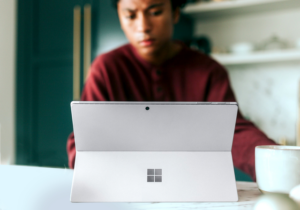July may be a little quiet on the Microsoft Teams front since Microsoft’s fiscal year ends on July 30, but it’s a good time for Teams administrators to check out new features and make a plan for how your company can use them. We’ve compiled a few anticipated additions for August.
More Life-Like Conversational Experience
When speaking in person, there is often overlap, interruptions, questions and tangents that characterize the flow of conversation. Natural interruptions don’t quite translate on a video call, however, because most software compensates to prevent echoes and feedback.
Microsoft Teams is changing this using artificial intelligence to remove echo and invite dynamic, “fluid conversation.” Stay tuned for more lifelike conversation in Teams.
Pop-out Shared Content: More Space to Collaborate?
The act and art of collaboration involves spontaneity. How often does an idea pop into your head while your co-worker is giving an update or telling a story? One advantage of online meetings is ability to share documents, charts, drafts and any number of resources on the fly to make ideas more concrete for the team. And a new Microsoft Teams feature could be giving you more physical space to do this.
Currently listed on the roadmap for August, Teams is planning to give users the ability to “pop out shared content into a separate window.” For now, we know that the idea is to display content in a different context. But it’s anticipated that dual monitor users will find this feature especially handy.
More Security Around External Chats
End users will soon be able to accept or block chats from external users. It’s a move intended to provide better security and fewer distractions—especially in meetings that involve external collaborators.
Enhance Your Physical Meeting Space with Teams Devices
Development is ongoing to help participants feel like they are in the same meeting room, whether they are actually dialing in from a home office or company conference room. Part of what creates that level experience are Teams-certified peripherals that further enhance participant experience, including headsets, web cameras and Teams phones.
Teams administrators can explore and purchase these devices from the Teams Admin Center (where you manage Teams).
What devices does your organization need?
Resource for End Users: Teams Meeting Best Practices
Most end users are pretty familiar with Microsoft Teams, but it doesn’t hurt to have a cheat sheet. In fact, it’s often small, preventative steps (like #4: test and configure computer hardware!) that can avert the need to submit a support ticket.
Consider circulating a resource like this one, 14 best practices for Microsoft Teams video meetings, to make sure end users feel confident with Teams, prevent possible mishaps and help them get a desired result from the platform.
Tikit is a Microsoft 365 IT service desk built for Microsoft Teams. From time to time, we share Teams and ITSM resources for IT administrators and analysts. Check out a recent blog about operating the service desk more strategically. Interested in conversational ticketing? Check out a demo of Tikit to see how it works.




